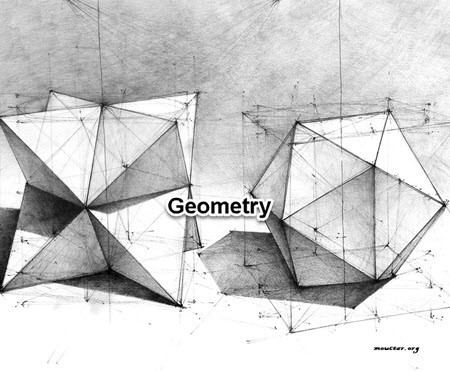

Areas of circles and triangles
Perimeter of a triangle:
The perimeter of a triangle is the sum of its 3 sides.
In the following figure we have:
![]() is the
is the ![]() of the triangle.
of the triangle.
We have used the semi-perimeter of the triangle when we deomnstrated the Heron formula.
It is simply ![]()
The student learns to calculate perimeters to be able to tackle problems involving costs of fences for example.

Example:
A location has a form of a triangle. The three sides have measurements of 250ft, 185ft and 215 ft. A fence costing 7 dollars per linear foot has to be constructed around the location, leaving an entry of 5 ft. The company hired for the construction charges 6 dollars for each linear foot. What will be the total cost of the fence?
Solution:
The perimeter of the triangle:
![]()
However, the entry of 5 ft will not get the fence.
We get:
![]()
Total cost per foot:
![]()
Total cost for constructing the fence:
![]() dollars.
dollars.
Area of a triangle:
The area of a triangle can be calculated using methods depending on information we have:
For a scalene triangle:
-Taking any altitude (as height, h) and its opposite side (as base, b).
The Area is:
![]()
We can also write:
![]()

For an isosceles triangle, given the three sides: a,a and b
We can calculate ![]()
![]()
Finally:
![]()
And the area of the triangle:
![]()
If we use the Heron formula, we find the same formula
![]()
In our situation ![]() and
and ![]()
That means ![]()
![]()
![]()
![]()
We get the following area:
![]()
![]()
Finally:
![]()

Special isosceles and right triangle:
In this situation we have :
![]()
Without going far, we can notice that each of the right triangle legs can be the base (a) or the height (a):
![]()
![]()
Using b:
![]()

This can be found from the previous formula as well.
Equilateral Triangle
We have the nomrmal formula:
![]()
![]()
![]()
![]()
![]()
Now for the area we have ![]()
![]()

finally:
![]()
Area Triangle using angles:
We can see that:
![]()
![]()
So: ![]()
The Area:
![]()
We can find all three relationships:
![]()
![]()
![]()
Circumference of a circle
The Circumference ![]() of a circle is as follows:
of a circle is as follows:
![]()
where ![]() is the radius of the circle.
is the radius of the circle.
Since the diameter ![]() , we can write:
, we can write:
![]()

Areas and circumferences of circular figures can be calculated without replacing ![]() with its value. That means in terms of
with its value. That means in terms of ![]() .
.
Length of an arc:

The length of an arc of a circle is related to the central angle ![]() that intercepts it.
that intercepts it.
If ![]() is in
is in ![]() , we have:
, we have:
![]()
For an angle in ![]() , we use the proportion to the circumference:
, we use the proportion to the circumference:
The length of ![]()
This is the same as:
![]()
Area of a Circle of radius r:

If ![]() is the radius of a circle, the
is the radius of a circle, the ![]() is:
is:
![]()
This formula is widely used in geometry and other fields.
Area of a Sector AOB of a circle:

If ![]() is the radius of a circle,
is the radius of a circle, ![]() the central angle (or intercepted arc) in
the central angle (or intercepted arc) in ![]() , the
, the ![]() of
of ![]() is:
is:
![]()
We simplify and get:
![]()
If ![]() the central angle (or intercepted arc) is in
the central angle (or intercepted arc) is in ![]() :
:
![]()
This is a simple conversion of ![]() radians above.
radians above. ![]()
Area of a segment of a circle

This can be approached 2 ways:
-Area of the sector minus area of isosceles triangle ![]()
-By deriving the formula.
The central angle’s bisector bisects the chord AB at D.
We get
![]()
But ![]()
![]()
OD is the altitude:
![]()
![]()
![]()
![]()
![]()
But we know that:
![]()
That returns:
![]()
The Area of ![]() is:
is:
![]()
We plug in:
![]()
Finally:
![]()
For sector AOB:
![]()
We take the difference to get the area of the segment:
![]()
![]()


Be the first to comment